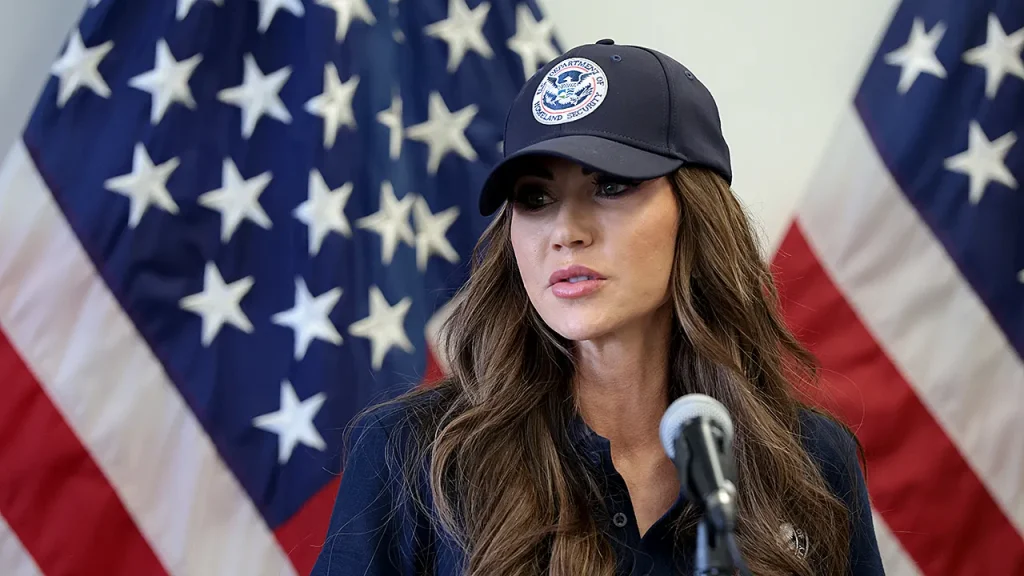Homeland Security Secretary Noem Takes Aim at Antifa, Comparing It to International Terror Groups
In a significant White House roundtable discussion, Homeland Security Secretary Kristi Noem didn’t mince words when addressing the threat of Antifa, comparing the far-left group to established terrorist organizations like ISIS, Hamas, and Hezbollah. Speaking to a gathering that included independent journalists who have covered civil unrest firsthand, Noem praised these reporters for their willingness to document what she described as a sophisticated network causing substantial damage across America. Her comments reflected the administration’s increasingly hardline stance against left-wing protesters, particularly those who have been demonstrating outside an ICE facility in Portland for months. Noem’s visit to Portland had apparently reinforced her conviction about the organized nature of these protests, noting that dozens of Antifa members from across the country had been arrested under the Trump administration. She even mentioned a recent arrest of “the girlfriend of the founder of Antifa in Portland,” suggesting that prosecutors were attempting to extract information about the broader network during legal proceedings.
The tone of the roundtable discussion was set early by President Trump, who characterized Antifa as a “very serious left-wing terror threat” that has been carrying out violence against ICE agents and other federal officials. The President made the provocative claim that many Antifa protesters are paid agitators, teasing an imminent revelation with the cryptic remark, “You’ll be finding it out very soon. You should see what we have on these people.” When asked about potentially designating Antifa as a foreign terrorist organization, Trump appeared receptive to the idea, turning to officials present and asking, “Would you like to see it done? You think it would help? I’d be glad to do it. I think it’s the kind of thing I’d like to do.” This exchange highlighted the administration’s determination to escalate its response to protesters it has now explicitly labeled as “domestic terrorists.”
The rhetoric employed by Secretary Noem was particularly striking in its severity, as she claimed the administration’s goal was nothing less than to “eliminate [Antifa] from the existence of American society.” Her characterization of the group went beyond accusations of property destruction or public disorder, venturing into claims about lethal intent: “These individuals do not just want to threaten our law enforcement officers, threaten our journalists and the citizens of this country. They want to kill them.” She further alleged a fundamental existential threat, asserting, “Their agenda is to destroy the American people and our way of life.” Such language frames the conflict not as political disagreement or even as a law enforcement challenge, but as an essential struggle for national survival, with Trump positioned as the defender “standing in their way.”
The roundtable featured not only administration officials like FBI Director Kash Patel and Attorney General Pam Bondi but also gave significant space to independent journalists to share their experiences covering black-bloc protesters. These reporters expressed gratitude for the administration’s acknowledgment of Antifa as a real and organized entity, while criticizing mainstream media outlets for either ignoring or downplaying violence associated with left-wing demonstrations. “Thank you, Mr. President, for having us here,” said reporter Julio Rosas. “And, you know, not to sound like a broken record, but it needs to be said that Antifa is real. It’s real. It’s a threat.” This sentiment reflected a common thread throughout the discussion – a sense that traditional media has failed to properly document or analyze the nature of these protests.
The framing of Antifa as comparable to international terrorist groups represents a significant escalation in official rhetoric about domestic protesters. By drawing parallels between a loosely organized collection of anti-fascist activists and groups like ISIS or Hezbollah – organizations responsible for mass killings and with clear hierarchical structures – the administration appears to be setting the stage for more aggressive law enforcement tactics and potentially expanded surveillance powers. The comparison also serves to delegitimize the political grievances that motivate many protesters by placing them in the same category as violent extremists motivated by religious fundamentalism or separatist ideologies. This rhetorical move transforms what might otherwise be understood as civil disobedience or even criminal property destruction into something conceptually equivalent to international terrorism.
The roundtable discussion highlights the deeply polarized interpretations of civil unrest in America today. Where some see principled protests against perceived injustice, sometimes accompanied by regrettable property damage, others – including top administration officials – perceive an existential threat to the American way of life. The claims about paid agitators and sophisticated networks mirror longstanding conspiracy theories about protest movements, while the promise of forthcoming revelations suggests an intention to further develop this narrative. As the administration moves to classify domestic protesters as terrorists and pledges to eliminate them “from the existence of American society,” fundamental questions arise about the balance between maintaining public order and respecting constitutional rights to free assembly and political expression. The stark language employed by Secretary Noem and President Trump signals that this administration has definitively chosen its position in this ongoing national debate.


